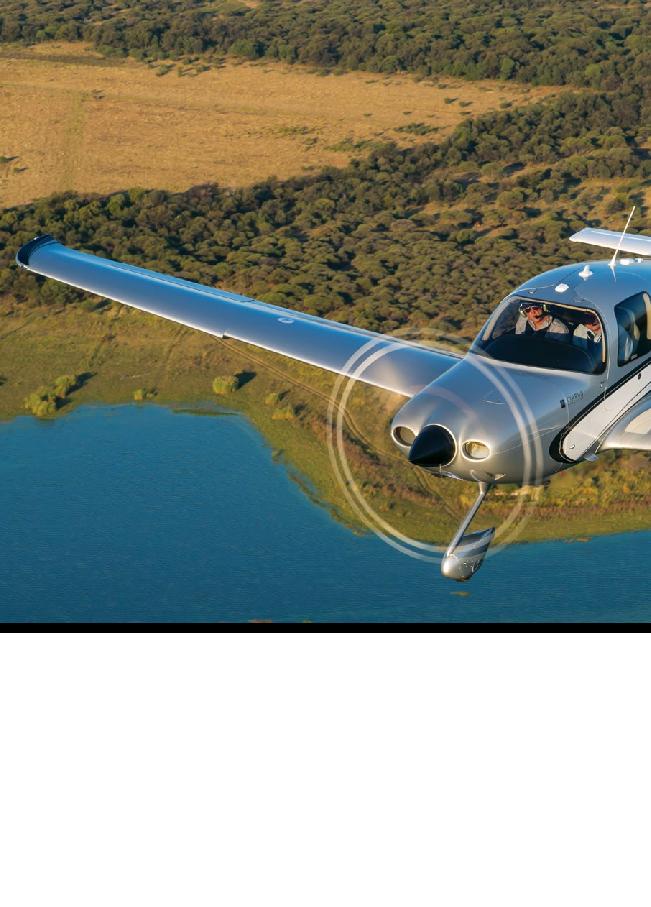
42
GA
/ Vol. 5 / No.9 / SEPTEMBER 2013
leading edges of the wing, fin and
tailplane permit the release of de-
icing fluid while the propeller and
windscreen also receive their share
through small jets. And while flight in
known icing conditions for two-and-a-
half hours is nobody's idea of fun, the
G5 carries enough fluid to do just that.
The increased MTOW, flap
deployment speed and flight into
known icing approval are the big
ticket items for me and yet the G5
comes with a whole host of new
or improved features. There is live
datalink weather and thermal infra-red
imaging available on the instrument
panel's 12" Garmin screens through
the Cirrus `Perspective' avionics suite,
an enhanced version of the G1000.
There is a digital autopilot and
electrically powered air-conditioning,
in-built oxygen system, ADS-B
equipped transponder, integrated
satellite-phone, FMS keypad and
a digital autopilot. Significantly,
the avionics suite has dual AHRS,
air data and electrical feeds so that
in the event of a failure, there is a
seamless transfer with no loss of data.
The G5 is equipped with
everything you could ever imagine
on an airliner's flight deck, let alone
a single-engine piston aeroplane.
It's an impressive aeroplane to
the beholder, however, the real
test as always lies in flight.
Getting started
Graham Horne is the Regional
Director for Cirrus Aircraft in
Australia and Southeast Asia. When
I first met him, he was smiling
from ear to ear having just flown
the Cirrus on one of the last legs of
his around Australia tour. I suspect
that it is not just the iPhone photo
of the Cirrus' airspeed indicator
showing a TAS of 210 knots that
has him smiling. He looks refreshed
after a long flight and that speaks
volumes for the aeroplane's interior
comfort even before I step aboard.
We walk around the G5 and
Graham highlights the impressive
features, dimensions and performance
that I have already outlined. I am
increasingly warming to the lines
of this aeroplane which seems to
possess a sprinter's muscular build
in a marketplace dominated by
lean distance runners. Its numbers
speak of performance and economy,
but its appearance oozes power.
The distinctive leading edge
is stepped at mid span, with the
inboard section possessing a lower
angle of incidence. This results
in the wing stalling first near the
wing root, allowing the outboard
section to remain unstalled and
the ailerons still effective. The two
wings house the two fuel tanks and
the undercarriage is a fixed tricycle
arrangement, faired by sleek looking
spats. The fixed gear doesn't seem
to impinge upon this aeroplane's
performance, but it surely lowers
maintenance costs and removes the
chances of an embarrassingly low
flare and a wheels-up landing.

